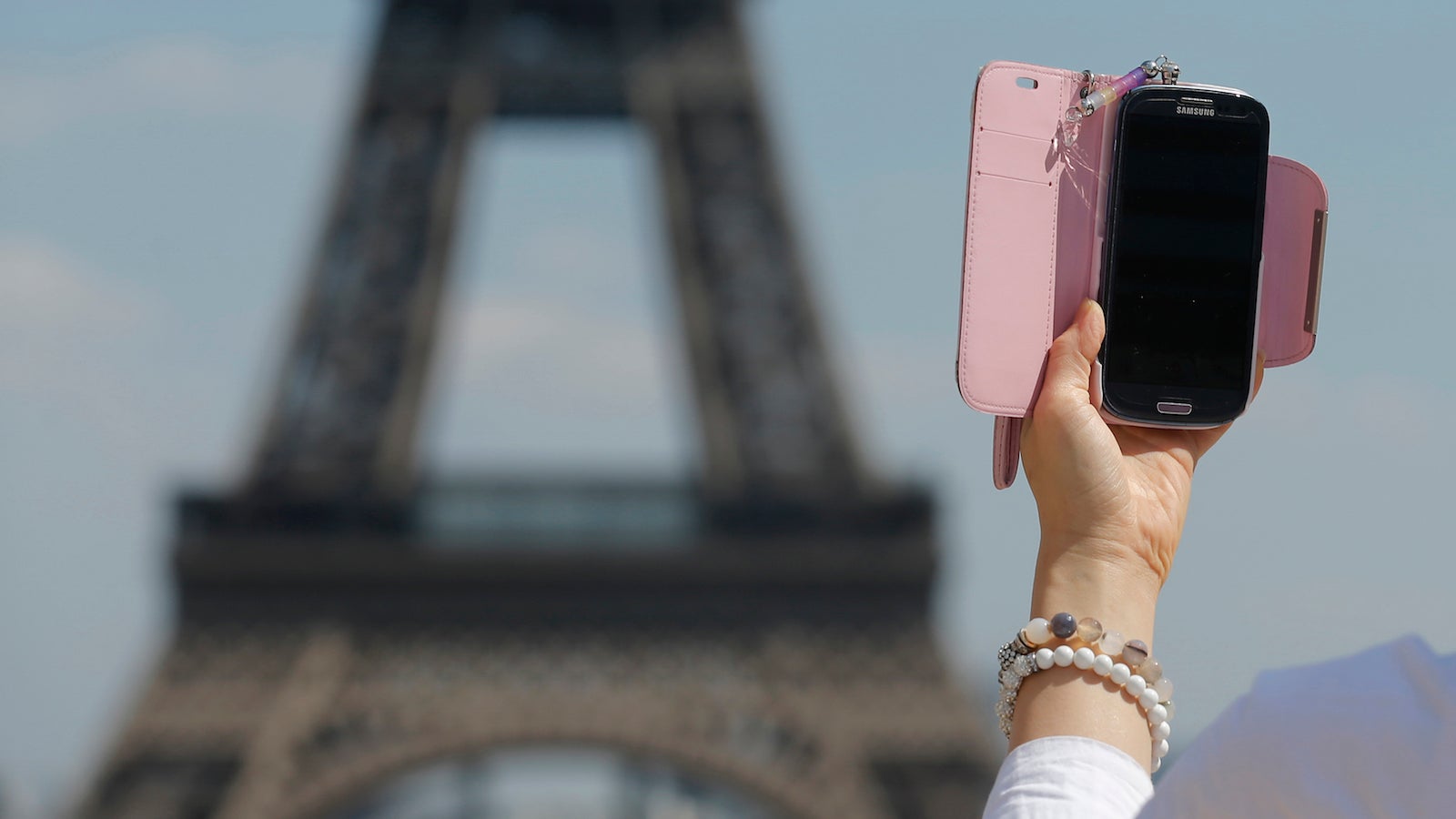The women whose lives you admire on Instagram might be trying to sell you something
Charmaine Olivia is just like you—only better. An ambitious painter, Olivia is as gorgeous as her canvases: slender, doe-eyed, ethereally beautiful.


Charmaine Olivia is just like you—only better. An ambitious painter, Olivia is as gorgeous as her canvases: slender, doe-eyed, ethereally beautiful.
You’d expect a girl so artsy and hip to be heading to Coachella, and she is. On her Instagram, of course, she shows the items she’ll be bringing with her. Some of them happen to be for sale, like RESQWATER, a hangover-recovery drink.
Between motivational messages and personal snapshots, Olivia scatters other product placements. There are spots for Hudson Jeans, Urban Decay cosmetics and temporary tattoos from Tattify tucked between intimate snapshots of an enviable existence: Olivia in her sun-filled studio, Olivia on the beach with the wind tousling her hair. Olivia did not respond to Quartz’s requests for more information on her commercial relationships, but the brand Hudson, for example, clearly reciprocates on social networks by referring to her as a “#HudsonSpotlight artist.”
It’s all very understated, of course. But when I see Olivia’s life—when I gaze into her photos—I want to be her . I want to buy her photogenic freedom, or whatever component parts of it are for sale.
With 300 million users worldwide, Instagram is rapidly on its way to becoming ubiquitous. The catch is that it’s not just a photo sharing app: It’s a way for brands to engage authentically with consumers. And it’s creating a new, sinister kind of brand ambassador: the “real person” living an impossibly glamorous life.
Instagram allows brands to present their products through an authentic lens: an actual, relatable person that you follow, who may also follow you. It is, to traditional branding, what the internet is to a glossy magazine: interactive, real-time, user-generated. Furthermore, Instagram users’ brand engagement runs deep: it transcends the cynicism reserved for other types of social marketing, where attempts to co-opt youth culture often spark mockery.
While Instagram’s active user base is almost equally split between the sexes, this new breed of lifestyle branding seems to be largely aimed at women. And it’s becoming indistinguishable from reality.
Take traveling photographer Molly Steele, another prolific Instagrammer who bears an eerie similarity to Olivia. Part of a group dubbed “The Hobos of Instagram,” Steele’s photos show her camping solo in the wilderness and riding gleefully atop freight trains:
Her feed has no visible advertising; no hashtags, no @replies to brands. But then, you’ll see Molly — Molly the brand — popping up elsewhere, helping sell things like the very pretty, vintage-style dresses she’s often seen in and these hipster sunglasses.
“Check out how she’s living, when she’s not traveling the world,” announces the website of sunglass purveyor Garrett Leight California Optical. “Check her out in our e-commerce photos as well!
The border between reality and advertising gets crossed somewhere in the progression from Olivia’s feed of product placements to Steele’s more subtly purchase-provoking lifestyle. You might walk into a shop and see an outfit Steele was photographed in, which triggers a desire you didn’t know you had, left latent from a photo you barely remember seeing. Much of millennial marketing —the trend for “authentic” and “vintage”—plays on these emotions: that déjà vu of a thing you didn’t know you wanted, a happy time you recall but never experienced.
Steele says that her work with brands is organic; the retailers she promotes are friends and no money has changed hands. “I’m careful not to sell-out or to become a tacky billboard, in order to preserve both my personal integrity as well as that of my work,” she told Quartz.
That said, brands are looking for the kind of authentic exposure she can offer, and she does recognize that it’s worth big money —the kind traditionally devoted to ad buys.
“Instagram posts are essentially plots of advertising real estate,” said Steele. “Occasionally a sum of money is in the proposals I receive, but nothing that I consider fair value assessment of what I can provide.”
While Steele understands the importance of labeling product placements as advertisements, she points out that doing so can create visual pollution. “If product placement can be done in a way that is natural and simply a part of the story, I feel like it’s less obnoxious,” she says.
Subliminal advertising isn’t new: for years, we’ve been gently coaxed to buy the same products as our parents, neighbors, friends. But selling the lifestyle first, and then the brand, is something else entirely. Quieter. Seamless in a manner that’s invasive.
Of course, on social media we are all brands already. We live in a world where we enforce our own personal brands to sustain and increase our marketability. Where going wildly off-brand proffers the threat of economic reprisal.
But are we happier here? Happier, at least, now that we can delight unironically in a well-disguised ad for artisanal baguettes or vintage sun dresses? If we aren’t happy, we could push back. One benefit of capitalism—at least for those with cash in hand—is that the world is ours to define. The customer is always right, after all . As long as she knows she’s buying.